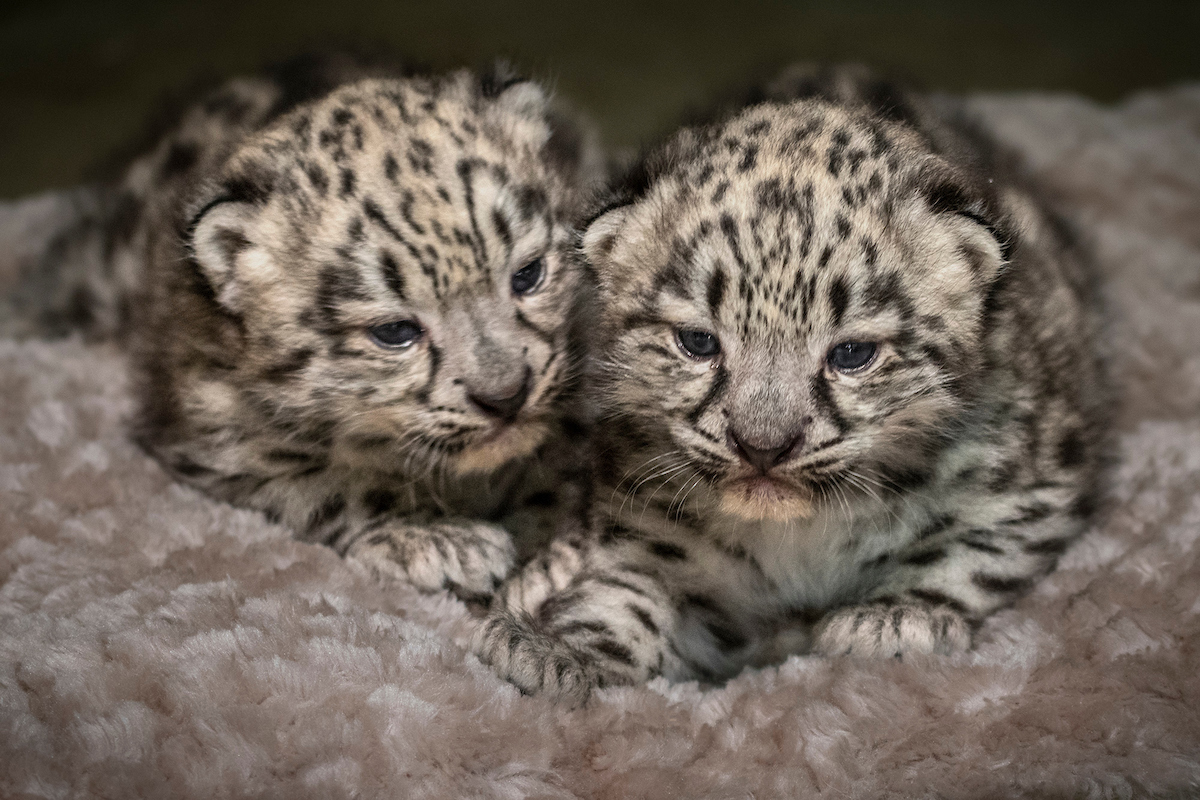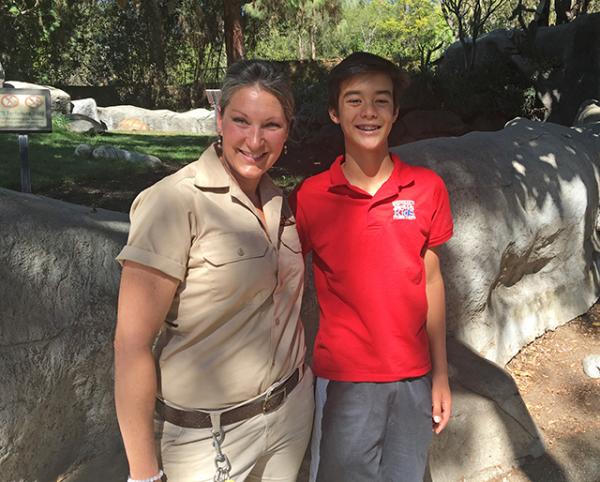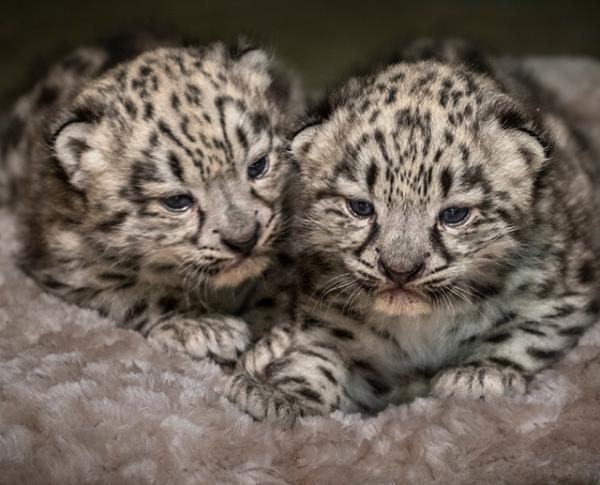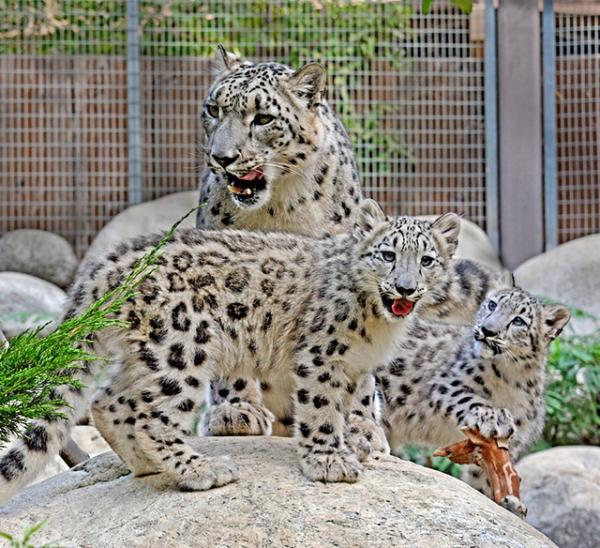KID REPORTERS’ NOTEBOOK
A Warm Welcome for Baby Snow Leopards

Visitors to the Los Angeles Zoo can now see twin baby snow leopards jumping on rocks and playing. I recently visited the cubs and talked with their keeper, Stephanie Zielinski.
During my interview, Zielinski revealed the cubs’ names. The female is called Marai, which means “hidden in the mountains.” The name was chosen, Zielinski said, because cubs are elusive and difficult to spot in the wild. The male cub is named Meru after Mount Meru, a sacred mountain in India.

Ben with Stephanie Zielinski at the Los Angeles Zoo
The cubs are the offspring of snow leopards Georgina and Fred, who were borrowed from zoos in Ohio and New York through the “Species Survival Plan.” The program supports endangered species through captive breeding programs.
Although the cubs were born in May, they did not make their public debut until September. That gave them time to bond with their mother, while the staff observed and examined them.

Baby snow leopards Meru and Marai at the Los Angeles Zoo (photo by Jamie Pham)
NATIVE TO CENTRAL ASIA
Snow leopards, which are extremely rare, live in the mountains of Central Asia. They are suited to high altitudes and cold weather. Their thick coat is a combination of whites, grays, and tans, providing camouflage and warmth in snowy climates.
The animals’ tails are the longest of all the cat species. This helps them balance in their mountain environment. Their large feet have hair on the bottom to protect them as they walk on ice. And their pale gray eyes reflect light so that they aren’t blinded in bright snow.

Mom Georgina with twins Marai and Meru (photo by Tad Motoyama)
Although it was nearly 100 degrees on the day of my visit, temperature controls helped the snow leopards stay cool. Snow leopards in zoos can live longer than 20 years. They only last about half as long in the wild.
“A 10-year-old snow leopard in the wild would be considered extremely old,” Zielinski said. “It’s a pretty tough life out there.”
Zielinski hopes that the baby snow leopards at the zoo will raise awareness about the need to protect endangered species. “Whenever people have the chance to come out and see baby animals,” she said, “it’s exciting, and that gives people the opportunity to understand more about snow leopards.”
